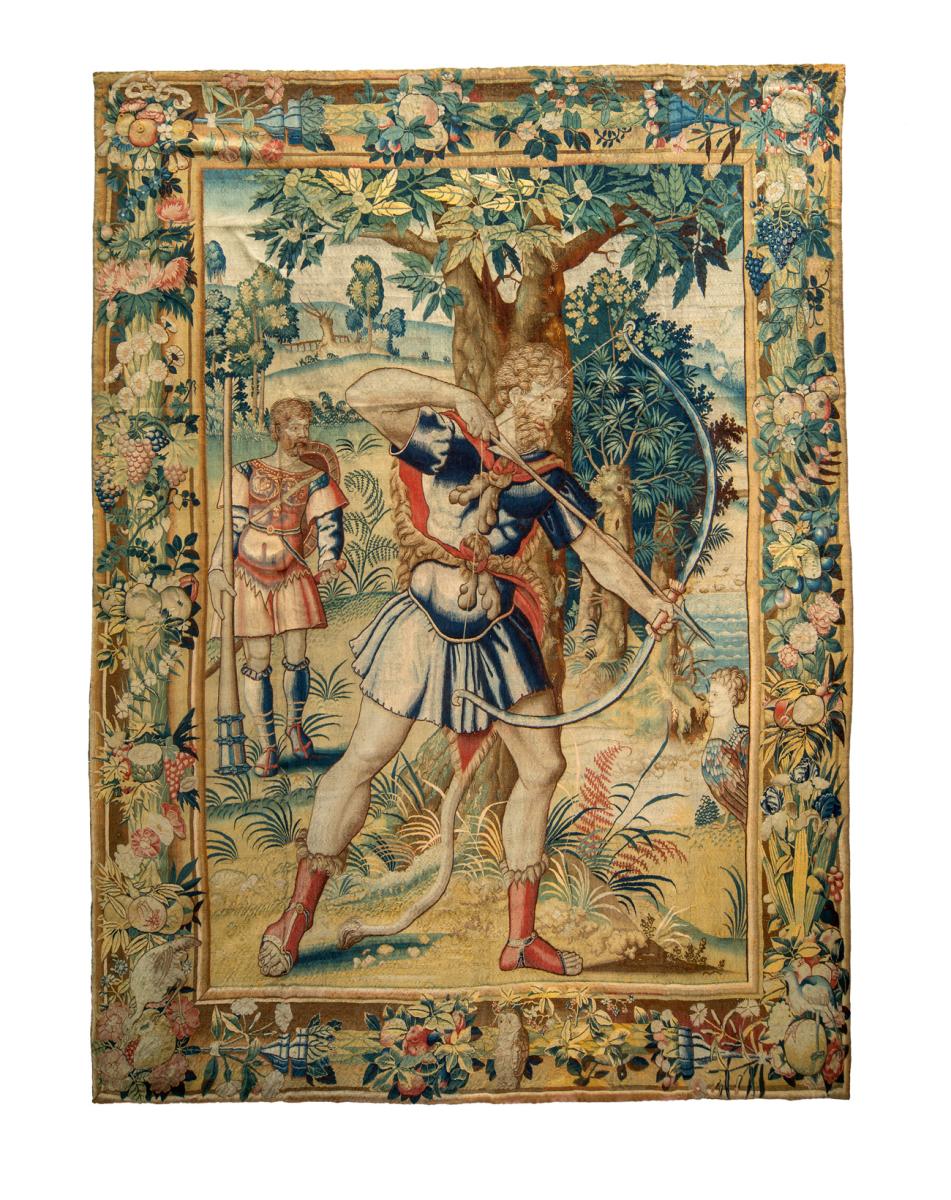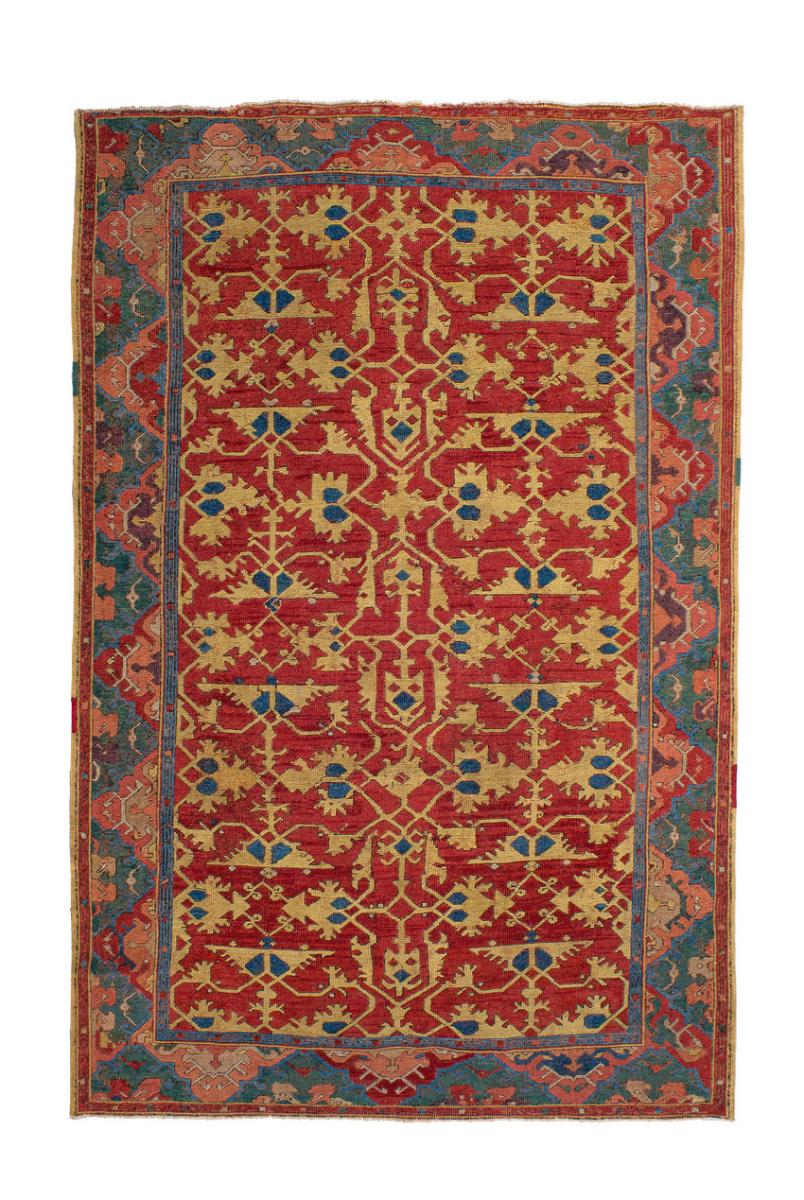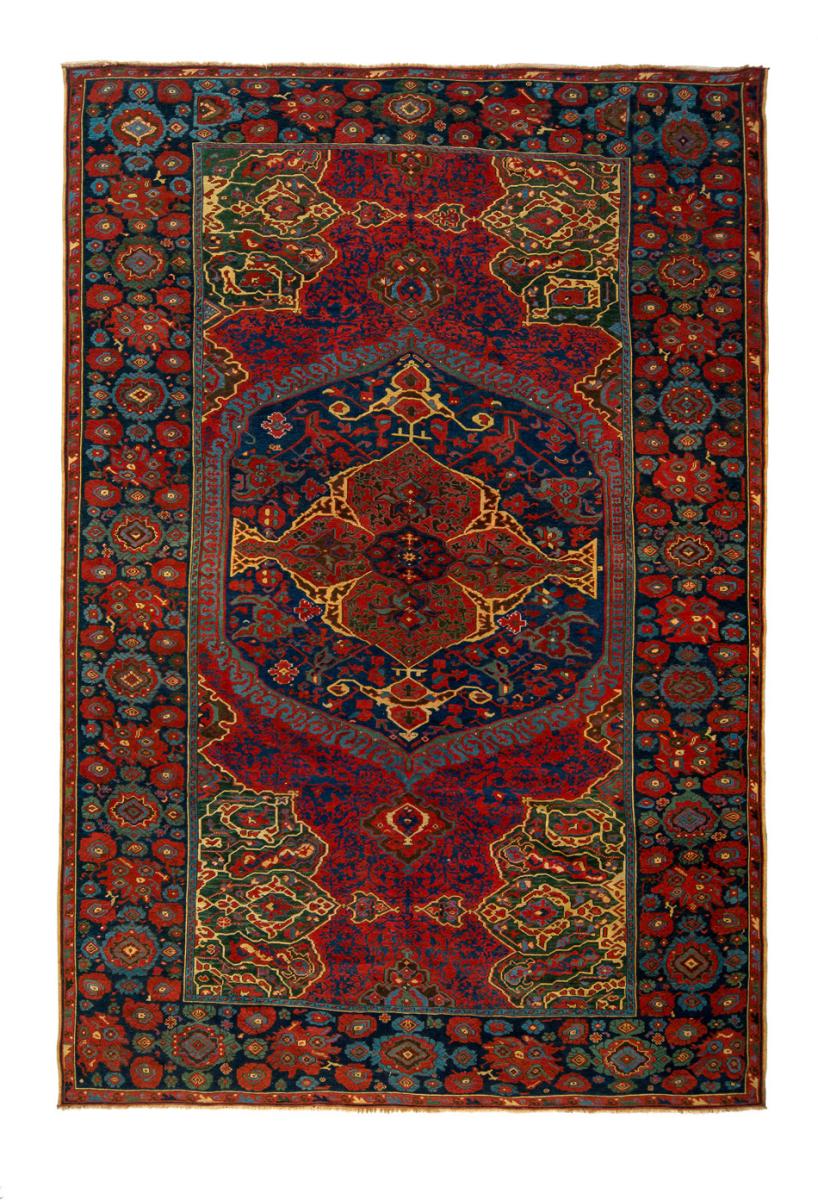Ever since 1992, Mirco Cattai committed himself to high-quality oriental antique rugs, a field in which he stands out in the Italian and international market, with the name of Mohtashem Gallery. In January 2011 the new art Gallery, named after him, was inaugurated and placed in a central location, namely 12, Via Manzoni in Milan. The vast collection, from Anatolian, Caucasian and Persian rugs, crafted between the 16th and the 19th century, is the result of the accurate quest and the meticulous selection of hundreds of specimen made by Mirco Cattai himself.

L’arazzo illustra un episodio delle Fatiche di Ercole – le prove imposte all’eroe da Euristeo, re di Micene e Tirinto- e faceva certamente parte di un ciclo che inscenava altri episodi mitologici della leggenda, presumibilmente almeno altri undici come si ricava dalla serie n. 23 di proprietà del Patrimonio Nacional de España che costituisce senza dubbio il precedente più prossimo, per i cartoni e per le caratteristiche della tessitura (P. Junquera De Vega e C. Herrero Carretero, a cura di, Catàlogo de Tapices del Patrimonio Nacional, Volumen I, Siglo XVI, Madrid 1986, pp. 155-162, con bibliografia precedente; in particolare il panno n. 1 che raffigura lo stesso soggetto, Ercole e gli uccelli del lago Stinfalo).

Among the canonical Ottoman design types, the so-called 'Lotto' probably enjoyed the widest diffusion in the West. Characterized by a repeat pattern of golden-yellow arabesques, usually on a red ground, the design is named after the Venetian painter Lorenzo Lotto (1480-1556) who depicted it at least twice: in “The Alms of St. Anthony”(1542, Venice, Church of Saints John and Paul) and in “Family Group”(1547, National Gallery, London). This type of rug first appears in Sebastiano del Piombo’s “Portrait of Cardinal Bandinello Sauli”(1516) and subsequently in works of the Portuguese, Flemish, Dutch and English schools as well as in Hungarian catafalque painting of the 17th century. Popularity and success of ‘Lotto’ rugs in Europe is demonstrated by the fact that so far their appearance is recorded in about 80 old master paintings, which provide invaluable information for the study of the evolution and for the dating of the group.

‘Medallion’ Ushak rugs, one of the most successful types of Anatolian carpets, are characterized by a large central medallion, flanked by quarters of radiant medallions. Depending on the color of the field, we can distinguish specimens with a blue background (rarer) and a red background. The medallion in turn can be indigo, red, blue-emerald and rarely ivory and can have different shapes: round, ogival, compressed or lozenge, as in this case.
CATALOGHI E SCHEDE